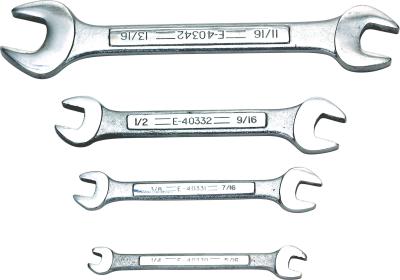
The oil pump in your 1993 or 1994 Ford Ranger pushes oil into the engine to keep it lubricated. Operating a vehicle with a broken oil pump can result in serious engine damage. If the oil pressure gauge is reading lower than normal, the oil pump probably needs to be replaced. Be sure that the replacement oil pump is specifically for your year-model of truck and is compatible with the engine size. Be aware that you will have to pull the engine to replace the oil pump.
Disconnect the negative wire on the car battery to disable the airbag system; allow at least two minutes before continuing.
Cover the fenders and cowl with old blankets. Have an assistant hold one side of the hood as you remove the hood-to-hinge assembly with a metric wrench. Lift the hood off
Use metric wrenches to remove the air cleaner assembly.
Disconnect the cooling assembly and drain it.
Label the vacuum lines with different colored tape and sketch a diagram of where they will go for reinstallation. Disconnect the vacuum lines.
Label all coolant hoses, as you did the vacuum lines, and disconnect them from the engine.
Remove the drive belt by rotating the tension counterclockwise. Slip the belt off the pulleys.
Use metric wrenches to remove the radiator, cooling fan and shroud.
Locate the inertia switch and turn it off to relieve pressure in the fuel line. Disconnect the fuel line from the engine to the chassis. Plug all fittings.
Remove the oil pump by taking off its mounting screws.
Disconnect the throttle linkage with a wrench.
Unbolt the power steering pump with a metric wrench. Do not disconnect the cables and leave the pump sitting upright.
Use a metric wrench to unbolt the compressor if your Ranger is equipped with air conditioning. Do not disconnect any hoses or cables.
Remove the starter motor and alternator with a metric wrench.
Disconnect the exhaust system from the engine block.
Place a block of wood under the transmission. Attach an engine sling or chain to the lifting brackets on the engine block. Roll the engine hoist into position and attach it to the slings or chains.
Use a metric wrench to remove the engine-to-transmission bolts and the two transmission-to-oil pan bolts. Remove the engine mount-to-frame bolts.
Double-check for any bolts still holding the engine in place. Lift the engine out of the car.
Position the oil pan under the oil filter and drain plug. Use a metric wrench to remove the drain plug then allow all of the oil to drain into the pan. Use an oil filter wrench to loosen the filter. Unscrew the oil filter the rest of the way by hand so it does not slip and splash oil. Use a metric wrench to unscrew the oil pan bolts then remove the oil pan.
Pour a few ounces of clean oil into the inlet screen of the new oil pump. Turn the pump’s driveshaft until oil comes out of the inlet screen.
Insert the pump intermediate shaft into the engine block, making sure it engages the auxiliary shaft gear then reinstall the rest of the new oil pump.
Reinstall the oil pan and oil filter by reversing the removal steps. Reinstall the engine block by reversing the removal steps.
Replace the engine oil with new oil until it reaches the full mark on the dipstick.
Start the engine. If the oil pressure does not rise within 15 seconds, turn the engine off and check for leaks.